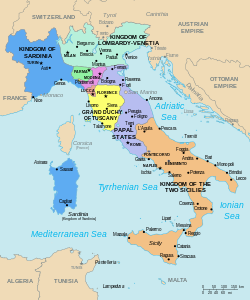| Royal Order of Francis I | |
|---|---|
 Breast Star of the Order | |
| Awarded by the House of Bourbon-Two Sicilies | |
| Type | Previously a State Order, Currently a Dynastic Order |
| Established | 28 September 1829 |
| Motto | MERITO DE REGE OPTIME |
| Awarded for | Civil and military merit and services to industry, agriculture, and the arts to the former Kingdom of the Two Sicilies |
| Precedence | |
| Next (higher) | Order of Saint George of the Reunion |
| Ribbon of the Order | |
The Royal Order of Francis I (properly 'The Royal Order of Francis I of the Two Sicilies' Italian : Reale Ordine di Francesco I) was an extinct order of merit of the former Kingdom of the Two Sicilies which was annexed in 1861 by the King of Italy (until 1860 King of Piedmont and Sardinia). It has been revived by Prince Carlo, Duke of Castro, as an award for services to charity and inter-religious understanding and includes a number of non-Roman Catholic statesmen and stateswomen among its membership.


